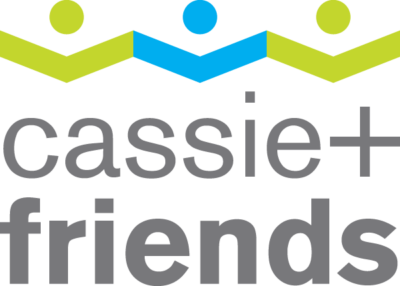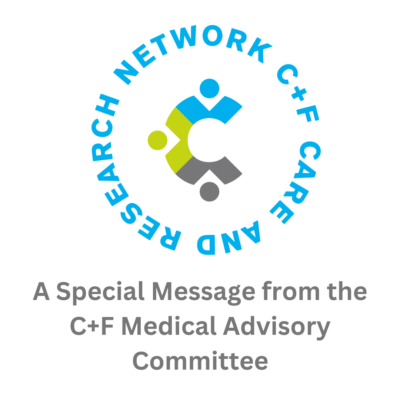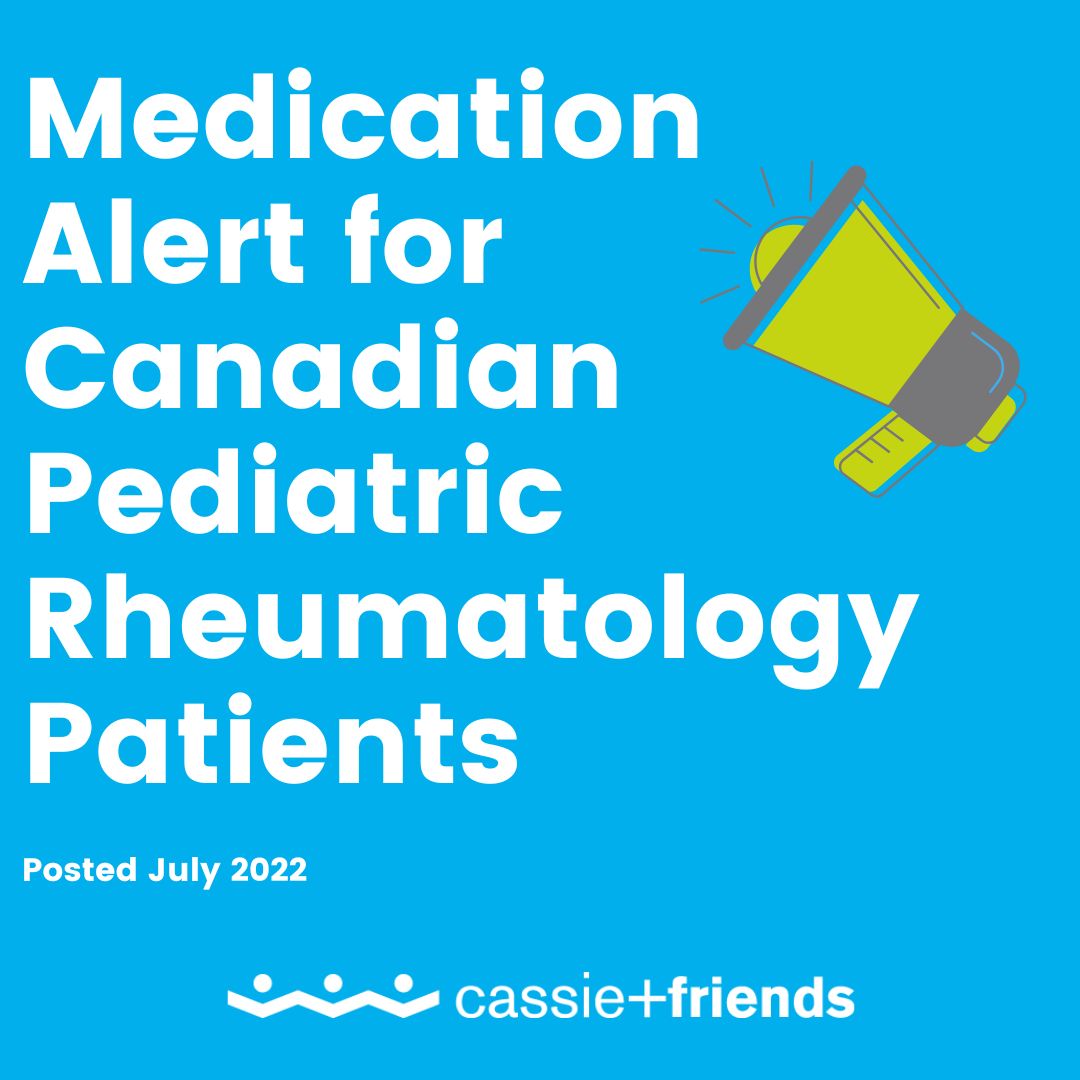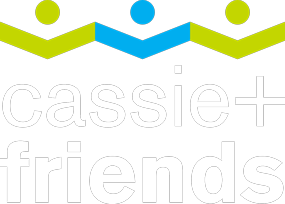
medications
There are many different medications used to treat and manage juvenile arthritis (JA) and other rheumatic diseases. Here are the main types of JA drugs and their generic names.
Medications can be taken orally (by mouth), by infusion (directly into the bloodstream), and some are administered by injection. Many families turn to Cassie + Friends for support and resources to guide their injection experience. Visit our injection support page to access tools, research, and learn more about navigating at-home injections.
You may have also heard about new medications called biosimilars. Cassie + Friends is actively engaged in conversations with our pediatric rheumatology partners and government about the recent introduction of biosimilars into the Canadian market, which varies widely from province to province. We’ve also worked with our Medical Advisory Committee to put together information (see below) that will help you get started with learning about biosimilars.
As a patient/family affected by a childhood rheumatic disease, we would like to keep you informed on this topic and may, in the future, look for parents and or youth willing to share their experiences either starting or making the switch to a biosimilar. If you are interested in receiving updates and/or being contacted to share your story, please connect with Brittany at brittany@cassieandfriends.ca.
biologics
Things you want to know about biologics but were afraid to ask!
Check out the recording of our Biologics Virtual Education Series Webinar with Pediatric Rheumatologist, Dr. Lori Tucker, and patient speaker, Julie Beausoleil.
In this session, you will learn what biologic treatments are, how they are different from other medications we use, and when we might recommend that a child take a biologic treatment. This video also covers what a ‘biosimilar’ treatment is, and how they are used for children with arthritis and rheumatic diseases. Julie will also share their lived experience starting and self-administering biologics as well as the strategies they’ve developed along the way.
You’ll also hear from Dr. Roberta Berard and Dr. Nadia Luca as they share their expertise on Biologics medication during the Q+A period at the end of the webinar.
Écoutez l’enregistrement du webinaire en Français ici.
0:00 Welcome from C+F Executive Director, Jennifer Wilson
6:57 Introduction of Julie Beausoleil (patient speaker) and Pediatric Rheumatologist, Dr. Lori Tucker
7:43 Julie Beausoleil: A Journey Through Medication
8:40 My Story: Diagnosis + Background
10:34 My Medication Journey (Methotrexate, Enbrel)
17:57 Biologics Specific Information including side effects + missing medication
19:37 Other Considerations
23:25 Introduction of Dr. Lori Tucker
24:50 Dr. Tucker’s presentation on Biologics
25:49 What is a Biologic Medication?
26:15 Biologic Treatments you may know
26:33 Biologic Treatments commonly used in pediatric rheumatology
26:59 How are biologic treatments different from other medications?
28:06 Are biologics safe? What are the possible side effects?
30:15 Can my child on biologics get the COVID-19 Vaccine?
30:39 Do biologic treatments cause long term problems?
32:04 Biologics in the pediatric rheumatology community
32:25 Goals of treatments for children with rheumatic disease in 2021
32:47 When do we recommend a biologic treatment to your child
34:29 Biologics are part of the standard treatment for kids with JA
35:15 Biologics in JIA Capri Registry Dec. 2020
35:59 Are biologics effective in treating JIA?
37:14 Are biologics effective in treating systemic JIA (SJIA)?
38:06 Are biologics effective in treating uveitis and other inflammatory eye diseases?
38:41 What if the first biologic drug doesn’t work?
39:31 What’s a biosimilar?
41:55 Concerns about switching from a biologic or starting a biosimilar
43:29 Steps to starting a biologic/biosimilar medication
44:07 Biologics Coverage Options
44:45 Getting coverage for a biologic medication
45:25 Once your child is on a biologic
46:03 When can a biologic be stopped?
48:18 Question + Answer Period – Introduction to Dr. Roberta Berard (LHSC) and Dr. Nadia Luca who will join Dr. Tucker and Julie for the Q+A
49:20 How long can a child stay on a biologic safely? Why does a biologic work well for years and then all of a sudden stops working?
52:09 Is there a hierarchy of biologics when the initial biologic stops working?
54:15 Is there a maximum number of biologics that a patient can try?
55:30 Are there any considerations you take as a patient on biologics? Ie. Going back to school?
59:45 Generally, how do I give my child a biologic? When there are issues what can we do?
1:02:42 Julie, do you have any advice for parents with children who are struggling with medications?
1:04:35 Citrate- free humira
1:12:00 Julie, have you ever felt any issues or stress when adding medications to your routine? How do you manage?
1:13:38 Should we check for antibody levels?
1:12:35 Could a low neutrophil count be due to biologics?
1:16:00 Is there any relationship between the length of time a child is on a biologic treatment and remission/ outgrowing JIA?
1:18:39 Is there a best biologic to treat ERA and will it actually take the pain away?
1:20:40 How would you guide or talk with families who are interested in a naturopathic approach over trying biologics?
1:23:00 What is next in biologics?
1:25:25 Julie, what advice do you have for families starting a biologic?
methotrexate
Methotrexate is one of the most widely used Disease-modifying anti-rheumatic drugs – or DMARDs – in pediatric rheumatology.
Most families have questions about this form of treatment: what are the long-term effects of Methotrexate? Which is more effective, oral or injections? My child feels sick with methotrexate, what can I do about it?
In this webinar, you’ll hear from mother and daughter, Abby and Amy Mazzone, about their experience with JIA, Uveitis and Methotrexate. Then, hear from pediatric rheumatologist, Dr. Jaime Guzman, as he reviews the research behind methotrexate use in children (when and why it’s prescribed), possible side effects and more.
For more tips & tricks for taking Methotrexate, check out this helpful resource from our friends over at the Canadian Arthritis Patient Alliance.
Écoutez l’enregistrement du webinaire en Français ici.
0:00 Opening remarks Jennifer Wilson, Methotrexate Webinar
2:03 Introduction about Cassie +Friends organization
2:48 Thank you to the sponsors: Nicola wealth, Abbvie, Amgen, Roche, Sobi
3:13 Information how to watch past sessions
5:10 Information about support network for JIA kids’ parents
5:50 Introduction of the speakers: Amy Mazzone (parent guest speaker), Abby Mazzone (patient guest speaker), Dr. Jaime Guzman (Pediatric Rheumatologist BC Children’s Hospital)
8:20 Opening points from Abby and Amy
9:40 Abby’s diagnosis and story
11:10 Abby began taking Methotrexate
17:25 Abby started the Methotrexate as injections
23:00 Tips from Abby to tolerate the injections
27:00 Pros and cons of taking Methotrexate shared by Abby
32:05 Importance of the blood work while being on Methotrexate
35:00 Introduction of Dr. Guzman
36:15 Opening points from Dr. Guzman
37:20 Conditions which Methotrexate is used for
37:50 A common story in the clinic
38:52 The basics of JIA
41:20 How Immune system works
42:55 Pros and Cons of JIA treatments
45:34 Pros and cons of no treatment
47:20 Treatment balance
49:17 Methotrexate History
52:05 Methotrexate is kind of chemotherapy
53:15 Dr. Guzman’s perspective on taking Methotrexate
55:38 Methotrexate Pros
57:50 Methotrexate Cons
59:12 How large Methotrexate risks are
1:00:30 Methotrexate intolerance
1:02:25 OPT-JIA Trial- Study to test ondansetron to prevent Methotrexate intolerance
1:04:47 UCAN Ride4kids to raise awareness about personalized medicine for pediatric arthritis
1:06:52 Opening points of Q&A session
1:06:55 Question to Dr. Guzman: Why Methotrexate is used prior to biologics, why just not start with biologics
1:10:24 Question to Abby: What do you like to have for breakfast the morning after you take Methotrexate
1:11:05 Question to Abby: Do you have many side effects the morning after you take Methotrexate and how long they last?
1:12:12 Question to Dr. Guzman: Are itchy feet and hot/cold sweats known as side effects of Methotrexate?
1:14:14 Questions related to reducing anticipatory nausea or how to deal with anxiety will be addressed by email and also a link to the past session related to behavioral depression will be shared.
1:14:43 Question to Abby and Dr. Guzman How common is dizziness with Methotrexate
1:15:30 Question to Dr. Guzman: Which administration is more effective: oral or subcutaneous?
1:17:25 Question to Abby and to Dr. Guzman: Have you heard about potentially doing injection in the stomach instead of arm?
1:19:24 Question to Dr. Guzman: When you increase the dosage of Methotrexate should you expect the side effects to be worse?
1:20:56 Question to Dr. Guzman: Can a child be on Methotrexate too long?
1:22:18 Question to Dr. Guzman: How Methotrexate support one another and how they work together?
1:23:50 Question to Abby: How do you feel with the addition of Humira?
1:25:30 Question to Amy: What is your advice on talking with a rheumatologist or a nurse when you’re feeling unsure, or questioning whether Methotrexate works or it’s been too long
1:27:25 Closing remarks by Jennifer Wilson
1:29:00 Gratitude to all speakers
1:29:07 Information about a survey and next scheduled sessions
1:30:45 Information how to support and donate to Cassie+friends
f.a.q.’s
Thank you to the Cassie + Friends Medical Advisory Committee and JA young adult patient, Julie Beausoleil, for answering these commonly asked questions regarding methotrexate, biologics medication and treatment for pediatric rheumatic diseases.
Both males and females should avoid pregnancy while taking MTX as if it is taken at the
time of conception or during pregnancy it can cause birth defects and/or miscarriage.
Individuals should be stop taking MTX for 3-6 months before trying to conceive.
The available evidence suggests that MTX does not have any long-term effects on the
female or male reproductive system or fertility.
The main risk of mixing MTX with alcohol is that both of these can irritate the liver and thus
together could lead to higher risk of liver problems. This is particularly true if one is binge-
drinking while taking MTX. In contrast, liver toxicity with naproxen is rarer.
There is no evidence to recommend vitamin B12 supplementation to help ease nausea or
other side effects of methotrexate.
Pediatric rheumatologists usually prescribe folic acid or folinic acid (leucovorin)
supplementation, which helps reduce some of the methotrexate side effects, such as
stomach upset, nausea and liver toxicity. There are many ways of prescribing folic acid or
folinic acid (leucovorin). Some patients take it every day whereas others take it once a
week. Your pediatric rheumatologist will discuss the best regime for you.
There are many ways to help reduce nausea caused by methotrexate. Reducing the dose,
changing its route of administration (pills versus subcutaneous injections), and splitting the
dose if given orally, may be proposed by your pediatric rheumatology care team. Other
suggestions may include giving it at bedtime during the weekend so it does not affect school
participation. Pediatric rheumatologists often prescribe medications to relieve nausea (for
example; dimenhydrinate, and ondansetron). These measures will usually help the majority of
children dealing with this side effect.
Sometimes, if nausea becomes significant and non-responsive to the measures listed
above, the pediatric rheumatologist may decide to stop methotrexate and discuss other
therapeutic options with the parent/child. We would suggest speaking with your
pediatric rheumatology care team about your concerns.
Methotrexate is prescribed either in pill form or in subcutaneous injections given every
week. The most common side effects of methotrexate are stomach upset, nausea and
fatigue. These side effects usually manifest themselves within 24 hours of taking
methotrexate and may last up to 24-48 hours. If these symptoms are present every day of
the week or occur far away from the time of methotrexate administration, it is unlikely that
methotrexate is the cause and you may be dealing with something else. If you are unsure,
we would suggest speaking with your pediatric rheumatology care team about your
concerns.
Pediatric rheumatologists may prescribe various classes of medications to treat juvenile
idiopathic arthritis. Each medication or class of medication has its own side effect profile.
Some side effects may be prevented or reduced in various ways (for example: by reducing
the dose, changing the administration schedule, or prescribing additional medication). If you
believe you/your child has side effect(s), we would suggest speaking with your pediatric
rheumatology care team about your concerns.
Methotrexate (MTX) is considered a mild immunosuppressing medication. It works by
decreasing the activity of certain types of white blood cells (WBCs). WBCs are also a part of
our body’s immune defense against infections, thus by definition MTX does suppress the
immune system to a mild degree. However, WBCs are overactive in autoimmune diseases
such as Juvenile Idiopathic Arthritis (JIA) and by suppressing their activity, MTX helps to
control the disease.
The term “immunomodulating” refers to a drug or substance that modifies the response of
the immune system in any way, which may include increasing or decreasing its function.
The dose of methotrexate is generally prescribed by a child’s weight, with the dose calculated
based on a calculated body surface area. Your pediatric rheumatologist will suggest dosing
changes in your child’s medication depending on several factors including having a reasonable
trial of a new medication, such as Humira that your child just started. It may take several
months to see best benefit from Humira. Talk to your pediatric rheumatologist to get an idea
of how they will make decisions like changing the methotrexate dosing or administration
method.
In some cases, your pediatric rheumatologist may suggest splitting the methotrexate dose in
this way; this may be an attempt to avoid stomach upset from the methotrexate.
Many children with JIA will take Naproxen and methotrexate together. Naproxen is a
medication with pain relieving properties, and has some anti-inflammatory effect as well when
taken regularly. Methotrexate is not a pain relieving medication, but works to control
inflammation in a very different way from Naproxen. Many children have good disease control
with this combination. Although sometimes parents are told by a pharmacist that one should
not take these medications together, in children and teens there is ample evidence that this
combination is safe as well as effective.
Both methotrexate and leflunomide have been shown to have efficacy in treating active
polyarticular JIA, in clinical trial testing. Methotrexate has been tested more extensively, has
slightly higher efficacy and the advantage of being able to adjust the dose more easily as well as
administer it through an injection when needed. It is known to have good efficacy in patients
with uveitis, whereas leflunomide has not been tested in this situation. Most commonly,
methotrexate is the first second-line, or disease modifying agent recommended, and
leflunomide is recommended when methotrexate is not tolerated.
Biologics used to treat ERA include adalimumab (Humira or biosimilar), etanercept (Enbrel or biosimilar) and infliximab (Remicade or biosimilar). Some patients
with ERA have another associated condition like uveitis or inflammatory bowel disease. In these cases, this would affect which biologic you would select in discussion with your health care team.
At this time, most of the research for peptide-based therapies has been in animal models of rheumatoid arthritis with some promising results. More studies are needed in humans to determine whether these are feasible and effective treatments. Typically novel therapies are developed and tested in adults before they are studied in pediatric patients.
Yes, there are a new class of biologics that are oral, called JAK inhibitors. This includes a medication called tofacitinib (Xeljanz) that has been studied in children with polyarticular JIA. These medications will become more commonly used in a variety of diseases, and hopefully more available to children and teens.
At present, it is not known what factors- symptoms, lab tests, or disease type- put a patient at higher risk of flare off medication. Your doctor is the best to evaluate whether the symptoms you describe are due to active inflammation, or perhaps due to other issues.
We do not know if taking a biologic treatment for a longer period will influence the chance of a long lasting remission of disease. Each patient is very individual, and other factors, such as type of disease and previous flares, likely have influence over chance for disease remission off medications.
In university it can be easy to get overwhelmed with workload and focus solely on your school work rather than your body. There have been times where I took my medication late, or didn’t listen to my body in order to get work done. Although I thought this wasn’t a big deal, it caused negative effects in the long-run. I ended up experiencing flare ups, extra fatigue, and burnout. Thus, I recommend putting your health first, above all else. Make sure you stop on top of your medication schedule, and if something feels off, write it down in your notes (and include the date) so you ensure you’re documenting your health properly and can look at the progress of your symptoms. These notes will come in handy when you speak with your doctor and will help you recognize the result of your medication management. Additionally, if you feel tired and your body needs rest, listen to your body. Universities have accommodation measures in place for this exact reason.
The best piece of advice I can give is to A) coordinate with your doctor and a nearby pharmacy to have access to your medications while studying at university and B) research your university’s accommodation practices prior to starting at the university, or as soon as you can. In my case, I did not inquire about these accommodations because I felt like I didn’t need them. However, halfway through my first semester, I had a flare up and it affected my ability to write. Consequently, I was rushed into obtaining the required documentation from my doctor in order to get the accommodations before a long hand-written exam. However, once this process was completed, the accommodations were great. I received a “fluctuating condition” letter, which I can present to my professors if I need extensions for assignments because of my health. At the University of Ottawa, many accommodation measures are offered, depending on your needs. Some include a personal note-taker, extra time on exams, being able to type instead of hand write answers, getting deadline extensions, etc. These accommodations vary depending on your university, but it is definitely worth researching
Both biologics and biosimilars are created in living cells. Biosimilars are drugs that are highly similar to an originator biologic that has already been approved by for use by regulatory bodies. This means that there cannot be any meaningful differences between the biosimilar and the reference drug with respect to effectiveness and safety. In order to establish biosimilarity, extensive analytical testing confirms matching of structure and function of the drug, followed by limited but targeted clinical trials in a patient population to demonstrate the same efficacy and safety. For approval of a biosimilar, it is not necessary to repeat studies in all the conditions for which the drug is used, as extrapolation is used for the other conditions for which the reference biologic is approved.
The information we have to date on use of biologic treatments in adolescents do not indicate that there should be any concern that these treatments affect puberty or development in any way. As your teen goes into his growth spurt, his doctors may change his doses to account for weight increase.
biosimilars
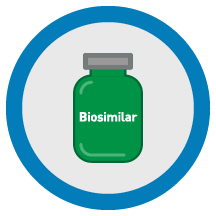 Biosimilars have been used to treat juvenile arthritis (and other childhood chronic diseases such as inflammatory bowel disease and vasculitis) in the United States for the past five years and longer in other countries around the world. Biosimilars are ‘copycat’ versions of biologic medications. There are very strict requirements in order for these medications to be approved by Health Canada.
Biosimilars have been used to treat juvenile arthritis (and other childhood chronic diseases such as inflammatory bowel disease and vasculitis) in the United States for the past five years and longer in other countries around the world. Biosimilars are ‘copycat’ versions of biologic medications. There are very strict requirements in order for these medications to be approved by Health Canada.
Some youth and families may have heard in the news or at their rheumatology clinic about new medications called Biosimilars. We asked our Medical Advisory Committee, composed of five pediatric rheumatologists across Canada, to share some information on what we should know and, most importantly, where to find the most accurate and up-to-date information specific to your child and family.
Medical Advisory Committee Special Message 1: Biosimilars: Information for Pediatric Rheumatology Families in Canada
Medical Advisory Committee Special Message 2: All of these Biologic Changes are Stressful and Confusing!
additional resources
Looking for a community of support?
Connect with other parents across Canada to learn and share experiences! In our secure online community, you can ask questions, get support and meet others parenting children with rheumatic disease. CLICK HERE to join today!
Check out these helpful too:
real medication stories from our community
Medication Update for Canadian Pediatric Rheumatology Patients
All of these biologic changes are stressful and confusing! [...]
When life gives you lemons…
Make lemonade! At least that’s what Jacob Shiell did [...]
Medication Alert for Pediatric Rheumatology Families (July 2022)
July 2022 Update: Medication Alert Dear Community, Please find [...]
